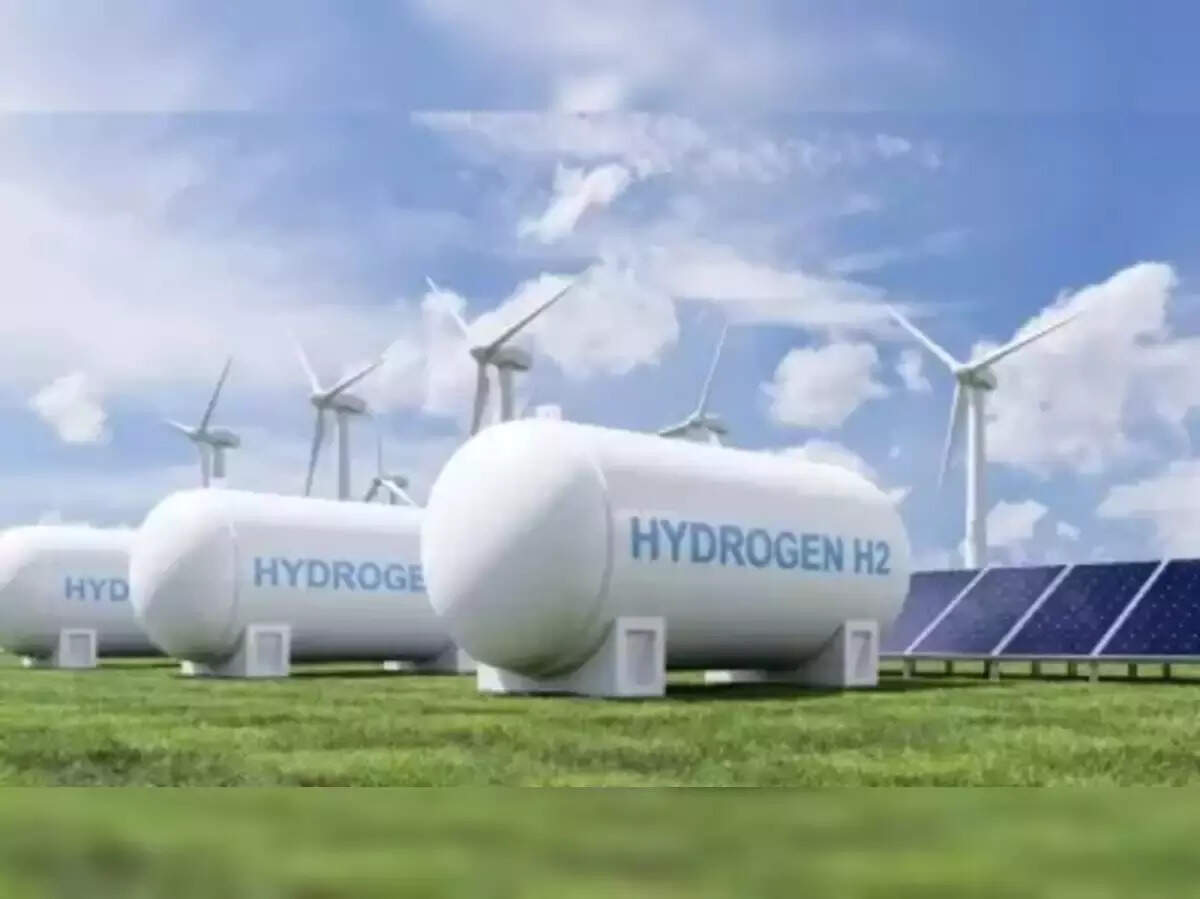
New Delhi: Green hydrogen blending is one good option to give green hydrogen a boost in India, NTPC Renewable Energy’s Chief Executive Officer, Mohit Bhargava told ETEnergyWorld in an exclusive interview. He said that if PNGRB gives its final nod on all the technical aspects of blending in the existing pipeline then it would open more opportunities. Edited excerpts:
Tell us about your recent MoU with Kolkata port to green hydrogen and green ammonia hub.
This is with a future perspective. When we are going to export we need some location near to the port otherwise if we start looking at that time when there is ample green hydrogen production in the country, we might not find any location to set a hub.
We have signed MoUs in Kolkata, Tuticorin, and might sign for more ports too.
What are your future plans around storage?
We are looking at the most competitive storage options. It is up to the bidders to decide. This includes pumped storage, battery storage in which we store electricity. Whatever we have done till now is in a technology agnostic manner.
Our last tenders were for pumped storage and battery storage. We need to tie up storage for providing round-the-clock power.
NTPC-REL has an ongoing pilot project in Ladakh for green hydrogen mobility. Any updates on that?
Bus trial runs are completed in the hydrogen mobility pilot project in Ladakh. The green hydrogen facility for production and dispensation is under construction and will be done by November this year.
There is an approval process for hydrogen fuel cell bus to run on the roads with people. Ashok Leyland is our agency to which we have given a contract, they have already made a bus. They have submitted all the details of their trial runs now authorities have to give clearance post which they can give the bus to us for public transport. That process is on. If everything gets done on time then we will complete the project by the end of November otherwise December this year.
Do you have plans around green hydrogen manufacturing?
Nothing specific in that… We have tied up with green hydrogen suppliers. For up to 1,000 MW green hydrogen plants that we will set up we have already tied up with green hydrogen electrolyser suppliers for that so that whenever we sign an offtake contract with anyone then we will be able to move quickly.
We have another pilot running for green methanol in which we are capturing carbon dioxide from chimneys and producing green hydrogen alongwith green methanol. We plan to complete it by December this year. This is basically carbon capture and utilisation plus green hydrogen.
This will not only make coal plants better but also produce green fuel in the form of green hydrogen.
The pilot project has a lot of potential for India as we import 90 % to 95 % methanol so if we can replace that with green methanol and reduce imports then we will be able to control the costs.
Who are the users of green methanol?
The most active and bulk user of methanol is the shipping industry and they are in the process of replacing their diesel engines with green methanol. It is generally not used by the refinery and the fertiliser industry.
What is your capacity addition target for the coming years? How much investment is being targeted for it?
Our target is to do 1.5 GW of renewable energy capacity this year and our capital expenditure will be about INR 10,000 crore. This capex amount includes ongoing and under-construction projects, and also pipeline projects for next year.
Out of this 1.5 GW, largely the capacity will be for solar energy. About 150 MW is for wind projects and the rest is all solar… The wind capacity is a part of hybrid projects only.
What is your take on India’s offshore wind ambitions?
Offshore wind is expensive, however, we should try to tap whatever natural resource we have. If not now, then when? The right strategy is to at least start the process of surveys as actual investments will happen only after the bids are done.
What are the key ways to give green hydrogen a boost in India?
Blending is one good option but it still has some technical aspects which is why we are going step-by-step like in our CGD blending project in Kawas. PNGRB has said that ultimately blending will go up to 20% so if they are okay that this much can work in the existing pipeline then it opens another opportunity. With 5% blending, this will not severely impact the gas prices as well.
The Kawas project will enable blending at a national level. So, blending even 5% is a lot. That is why we are saying in multiple meetings to just start… PNGRB is looking at the effects on the pipeline and all the equipment. We have shared the data with them. Once that is done, we can issue guidelines and inform the government as well.
For the domestic market, we need to have green hydrogen obligations as buying green hydrogen is not viable for the users at present.
Hydrogen transportation is a big challenge. The usage of hydrogen for a common person at a retail level is not much as of now. It will be by 2028 or 2030 that we will see large-scale usage of green hydrogen.
There are multiple possibilities but ultimately whatever is viable will be taken up. The sooner we are able to bring down the cost of green hydrogen, the better will be the offtake.
What is your solar project timeline for the coming years?
Out of our overall target of 60 GW capacity, today, we are working on a pipeline of 20 GW of renewable energy projects. Of this, 3.3 GW is operational, over 7 GW is under-construction, and we hope to place orders for the balance 10 GW also in the next 10-12 months. We are aiming that by 2026, a large part of this should be operational.

